Aeon Timeline Easy Way to Drag and Drop Many Events From Binder at Once
5 planning tools for novel writing: Scrivener, Scapple, Xmind, Aeon Timeline and Trello
An updated version of this post is now available on my personal website at www.alexanderlane.co.uk .
One of the most daunting tasks I've faced starting out as a novelist is organising my ideas into a plan that will help me to turn them into coherent 100,000 words.
As a bear of little brain, it's at least a hundred times more complex than jotting down a few ideas for a thousand-word piece of journalism or a blog post.

If you're a pantser who lets the words flow, or a planner who details every scene in advance, you'll need the outline of your story, because agents and publishers want a full synopsis if your 10,000-word taster tickles their fancy.
Later this year, my MA in Creative Writing at St Mary's University will require me to submit a full outline of my novel, so finding the right tool is more than a thought experiment.
Fortunately, my first attempts in novel-writing have given me the chance to experiment with a few tools and discover their strengths and weaknesses for my process.
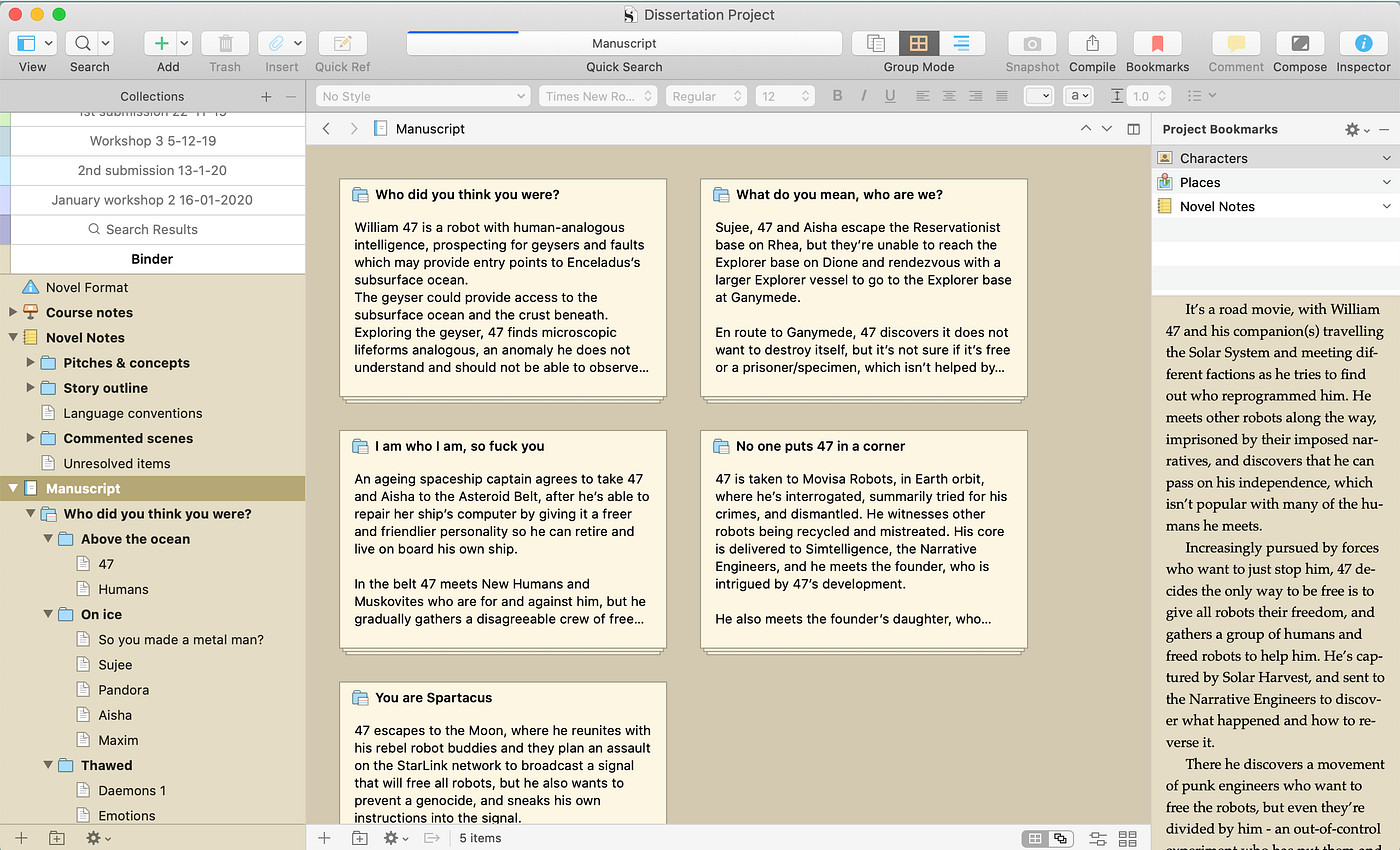
1 Scrivener . Many amateur and professional authors swear by Scrivener, the long-form writing tool from Literature & Latte. It's enough for many writers on its own. When it comes to planning a novel, there are three key features:
The binder sidebar lets you organise the structure of your parts, chapters and scenes, which you can colour-code to show their status (or by narrator or location, if that's your thing), and drag-and-drop to change their order.
The corkboard gives you a set of virtual index cards where you can scribble your ideas for characters, locations, parts, chapters and scenes — in as much or as little detail as you want — and play with their order. When you're writing, you can see your ideas for the current scene in a synopsis sidebar.
Finally, the outliner view shows the same synopsis information along with things like word counts, status indicators, when you wrote them and progress bars if you've set yourself targets.
Scrivener is both ridiculously feature-rich (after three years I'm still finding new ways to use it) and absurdly cheap. The current price is £47, with a big discount if you take part in Nanowrimo or you're a student, and there's a 30-day free trial (a genuine 30 days of non-consecutive use).
While the learning curve can be steep if you're coming over from Word or Google Docs, I can honestly find very little to say against Scrivener, since it even lets you export to Word, PDF and many other formats including ebooks.
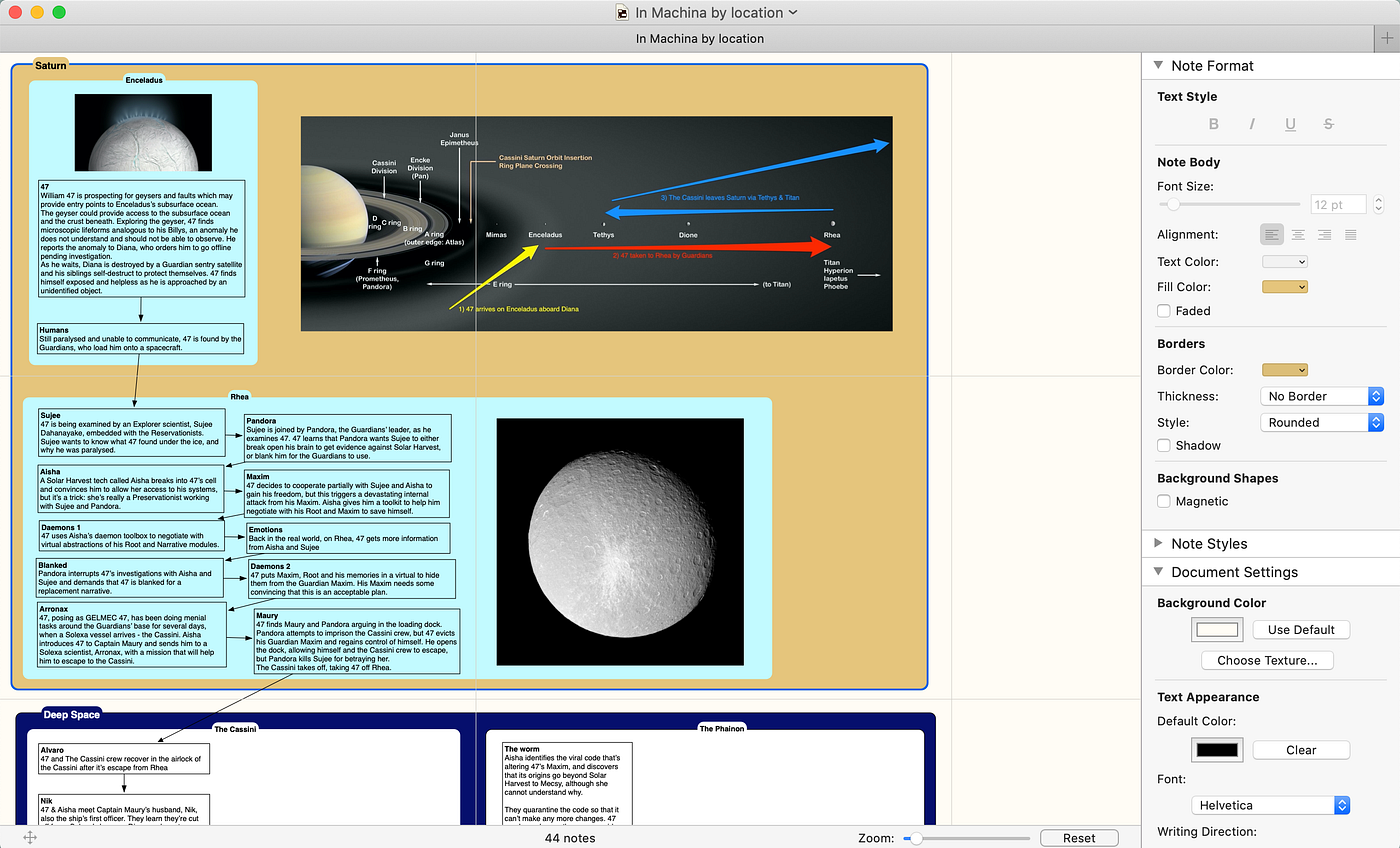
2 Scapple . Scapple is Scrivener's little brother — a mind-mapping tool from Literature & Latte — and its main advantage is that you can drag-and-drop from Scapple into Scrivener, or vice-versa.
If you're the sort of person who likes to lay out your ideas with the freedom of a mind map before you start writing, it's an ideal companion to Scrivener, that lets you get started very quickly without having to learn your way around.
Personally, I found the mind-mapping features too basic after using other packages, and I found it hard to turn my mind-map into something I could print easily. On the other hand, it's £17 after the 30-day trial.
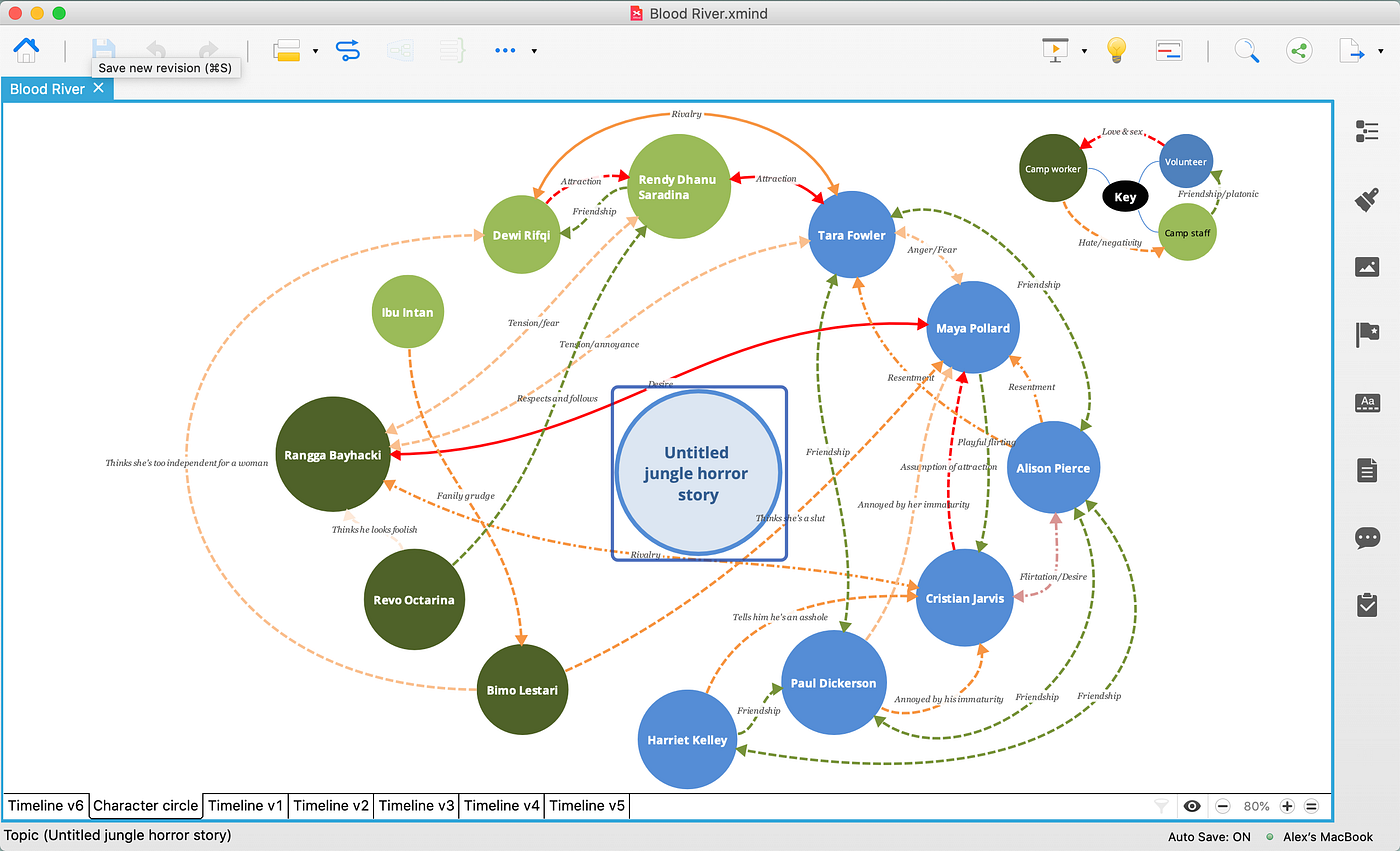
3 Xmind . If you want a powerful mind-mapping package that will let you do everything from free-form thinking to timelines and organisational charts, you'll need something like Xmind (and there are a lot of mind-mapping packages).
I've been using it for about five years and used it to plan all of Blood River, from the outline/timeline to character relationship diagrams. I've also used it for many other projects where I wanted the ability to zoom in and out at different levels of detail, apply a wide range of formatting and create linked mind-maps for complex projects.
There are two desktop flavours for MacOS, both available in a highly-functional free edition and a fully-featured Pro version (you get things like exports to Word/Excel and Gannt charts, but not to Scrivener). There's also a mobile version for iOS/Android.
Xmind 8 is a standalone package that I've used extensively in the free edition. The Pro edition costs US$129 (£99). Xmind ZEN has a new engine and is probably better, but if you import to ZEN you can't return to Xmind 8. ZEN is also subscription-based, at US$60/year (£46), which puts me off (although it comes with the full mobile version for iOS/Android). Students/teachers can get around 50% discount on Xmind 8 and Xmind ZEN.
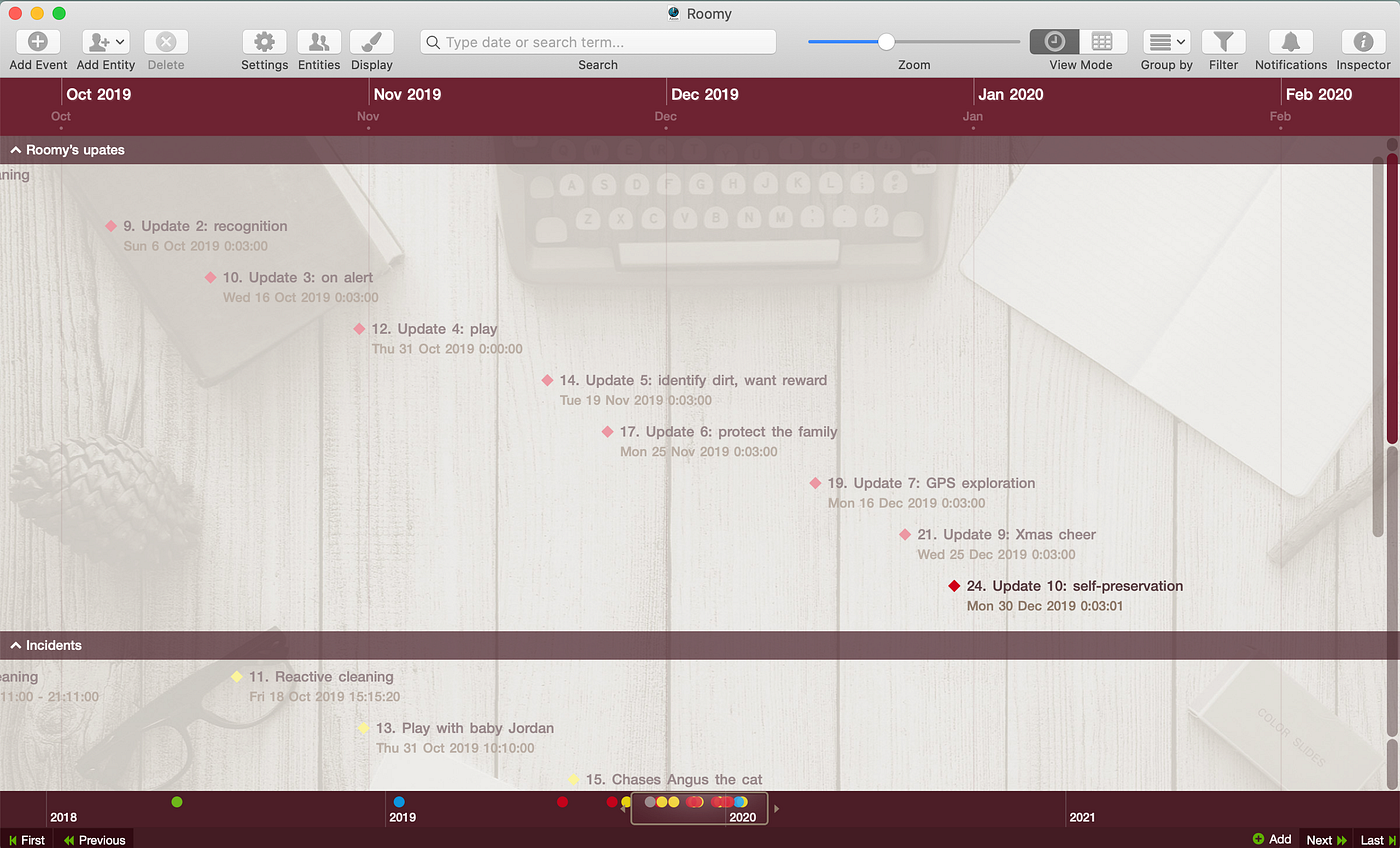
4 Aeon Timeline . A simple outlining tool like Scrivener's corkboard or Scapple can make it hard to keep track of your who's doing what to whom, when and where, particularly if you're writing something with an epic or historical scale.
Aeon Timeline helps you to create a story outline, complete characters, locations and story arcs, on a timeline view that lets you zoom in and out at any scale from seconds to millennia. You can use conventional calendars or create your own calendar for the Munchkin kingdom on the planet Zarg.
Aeon Timeline's strength is that it will sync with Scrivener, creating events that you can organise as chapters and scenes. It's also fairly complex, and doesn't welcome you with easy-setup wizards. The example project — an intriguing breakdown of Wuthering Heights — is impressive but made it no less welcoming.
I started with a short story, and for my MA project I decided to outline in Scapple and Scrivener, then import the outline into AT when I had a better idea of the timeline and characters.
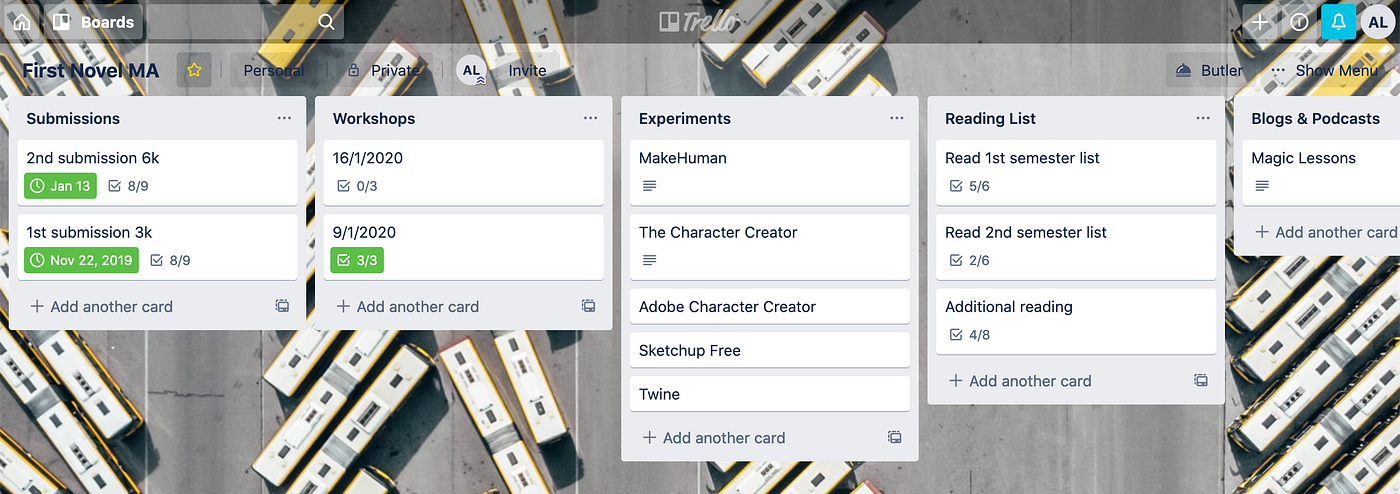
5 Trello . Some writers use Trello for everything for fundamentals like story outlining and character planning — and there's no reason why not — but I like to use it for the process around my novel and the MA it's a part of.
Currently there are research tasks, workshop deadlines, reading lists, course submissions, appointments to make, and I expect that will become shortlisting agents and creating pitches when the manuscript is complete (or I have time to do it for Blood River).
Trello's flexible like that, plus it's great for collaborative projects and you can use it across devices. Most importantly, it's free unless you're working in large groups or you want extra bells and whistles.
Why I'm no longer writing on Medium
Medium has changed a lot since I began using it in 2016, most importantly the pivot to a paywalled platform where free content seems to be almost invisible. It doesn't suit the way I blog, and with several novels in the pipeline I've decided my own site at alexanderlane.co.uk gives me more flexibility.
My 5x5 travel content will remain on Medium for now, but anything about writing or adjacent to the themes of my stories can now be found on my new site.
veitchcommoodle1982.blogspot.com
Source: https://medium.com/5by5/5-planning-tools-for-novel-writing-scrivener-scapple-xmind-aeon-timeline-and-trello-ae566ce8af4
0 Response to "Aeon Timeline Easy Way to Drag and Drop Many Events From Binder at Once"
Post a Comment